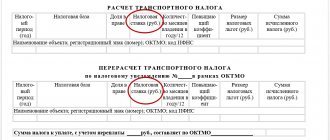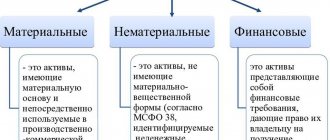Capital gain in absolute terms, that is, profit, is an indicator of the success of such a market entity as a commercial organization. The higher the profit, the better for creditors, investors and the owner himself, but for an objective assessment of business performance it is also important to correlate it with the capital, labor and assets expended. The numerical expression of profitability, being a key basis for economic analysis, serves as such an indicator for assessing economic efficiency both within the company and for market institutions external to it.
Why do you need to calculate profitability?
The rate of return is the motivational basis for financial market participants external to the company: if the overall profitability of a business is 5% for an ongoing long-term project with approximately the same profitability, it is considered not very attractive, then a queue of co-investors and creditors will line up for a project with a profitability of 100%.
In a crisis situation at an enterprise, a profitability analysis will allow us to identify the weakest places in terms of return and efficiency, so that, after making informed decisions either about their curtailment or about additional investments, they can be eliminated.
To correctly calculate profitability, a number of correctly calculated indicators are also required - from various types of profit to even more diverse capital investments. The type of profitability associated with the most critical, large investments will depend on the industry, the specific market situation and the objectives of the enterprise:
- In labor-intensive production, personnel profitability will be more important;
- If production requires a large number of fixed assets, then return on assets or fixed assets will come to the fore;
- If you need a large amount of working capital or working capital of the organization, then profitability must be calculated at this point;
- When obtaining loans or funds from investors, the key will be the ratio of the critical type of profitability with the costs of raising funds, taking into account capital turnover. Lenders and investors, seeing a higher return on their investment than their requested return on capital, will take this into account when deciding whether to invest from a range of alternatives.
We will set up profitability calculations in 1C programs in a short time
Additional indicators in profitability formulas
In addition to the main indicators, other factors can be used to show profitability:
Types of profitability
- Profitability of contracting services. The main thing is to take into account that contractors incur additional losses if they do not fulfill their obligations at least partially.
- ROL is a special indicator for assessing labor force. It is usually shown as a ratio between the volume of net profit and the number of employees who were registered in a particular company over a certain time. Managers themselves must cope with the control of population thresholds. So that profits remain at their maximum.
- ROS. The same thing, but only in sales. In this case, we mean the relationship between the net profit of the enterprise and what is gained specifically from the sales of a particular product. In short, this is the net profit that remains after deducting the tax burden along with sales volumes. This is the percentage of profit received for each ruble invested in production. Thanks to this figure, the cost of goods is formed. It also makes it easier to determine production costs.
You can make profitability indicators artificially increase. For this purpose, they either lower the cost or raise the price per unit of goods.
Types of profitability
Based on the types, an analysis of profitability indicators is carried out. Let's look at them briefly.
Profitability threshold
The break-even point occurs at such a volume of sales of products or services when revenue and total income are equal to costs, that is, profit is zero. The faster a business can reach this point, for example after its launch, the less risk it will incur. The profitability of costs is equal to zero, so the threshold is a marker of both a crisis situation and the growth of the company.
Return on assets (ROA)
The ratio of net profit to the total assets of the organization. The standard for this indicator depends on the industry, the degree of capital intensity and labor intensity. It is important to remember here that assets themselves do not produce or do anything unless they are financial assets. Therefore, when using it, if this indicator is taken out of context, assessing the return on assets in isolation from other factors, one may get the false impression that assets are the main factor of profit, although in fact this is not the case.
Return on Sales (ROS)
The ratio of one type of profit to the volume of sales value for the period. Based on the available types of profit, profitability of sales is distinguished by net profit, operating profit (most often used) and gross profit. The standard varies by industry or country. The higher the turnover, the lower the return on sales that average companies in the industry can afford. And if in return on sales profit is correlated with revenue, then in return on costs, which is the ratio of net profit to cost, the value of cost is, accordingly, involved.
You can also read about calculating profitability based on net profit on our website.
Profitability of production
Here the analyzed object is production activity. Its profitability is obtained from the ratio of profits to the costs of production and sales of goods. At its core, it is the return on invested capital by company, by product type and area of activity. The facets of the analysis reflect such sections as the enterprise, type of product and line of activity.
Project profitability
Can be calculated in a variety of ways depending on how the investment is accounted for and how it carries its value. In English-language practice, the coefficient is called the Accounting Rate of Return (ARR), and in translation - the accounting rate of profit or profitability. Its calculation is as follows:
ARR = annual net return / total investment
This formula is applied if the initial investment is written off completely. If there is a residual value of assets, then they are taken into account in the denominator of the fraction, and the formula takes the form:
ARR = net average annual profit /(0.5 * (total investment + liquidation value of assets))
The calculation, unfortunately, does not take into account the time distribution of cash flows and the cost of raising capital, since it is based on net profit. It is easy to obtain, but to make a decision on choosing a project, not only it is used, but also many other indicators such as NPV, IRR, PI. This indicator is closest to such a calculation as the calculation of financial profitability, since here we analyze the effectiveness of financial investments.
Return on Personnel (ROL)
Ratio of profit to labor costs. When calculating costs, it is necessary to take into account almost all costs associated with employees, not just wages. However, it is the employees who “produce” value for the company, so this is one of the most eloquent indicators of labor efficiency in the company, by which enterprises within the industry can be compared. You just need to remember that along with the level of profit, the level of wages also affects the indicator. And if wages are artificially kept at an unacceptably low level in pursuit of high staff profitability, then the enterprise will at the same time experience high staff turnover, low quality products, depriving itself of the chance to obtain a highly qualified workforce, and at the same time prospects for development. The unit of analysis may be a production structural unit, which may be characterized by a certain profitability of personnel. In this case, profit is one of the types of marginal profit.
Return on Current Assets (RCA)
Current assets transfer their entire value to goods during one economic turnover. They include money, raw materials, materials, etc. Profitability for them is calculated as the ratio of net profit for the period to the value of current assets that transferred their value during this period.
Return on net assets (RONA)
Net assets are the real value of the assets at the disposal of the organization. They are calculated as the difference between the assets and all debt obligations of the company. In value, they are usually almost equal to equity capital. The nuances relate to own shares purchased from shareholders, deferred income and the debt of the founders for contributions to the authorized capital - all of them are not included in the calculation. RONA is defined as the ratio of profit before tax to the value of net assets, while differing from return on equity, which is the ratio of net profit to the company's equity.
We will select a 1C program for free to automatically calculate all types of profitability
The relationship between profit and profitability, profitability and turnover
Almost all profitability measures use different types of profit. This dependence is shown below, and it is such that, due to changes in profit near the break-even point, profitability sharply changes its meaning and even sign, indicating the transition from unprofitability to profitability and vice versa. The further away you are from the break-even point, the smaller the impact of profit on profitability becomes.
Turnover and profitability have the following relationship: the more turnover the capital makes during the period, the greater the profitability will be, in multiples of this. For example, if capital turnover doubles in a quarter, then the profit from this capital will double, and with it profitability.
Automation of financial accounting
Based on 1C for convenient analysis of enterprise profitability and other financial indicators
Learn more
WA: Financier. Management Accounting
Automation of management accounting to assess financial condition.
Profitability calculation. To learn more
Relative capital gains and the DuPont formula
To understand the influence of factors on profitability and relative growth of equity capital, a formula is used that was developed in the 20s of the last century at the DuPont company.
ROE = Net Profit / Revenue x Revenue / Assets x Assets / Equity
By reducing the fractions in it, we obtain a formula for calculating return on equity, calculated as the ratio of net profit to equity. If we reduce it to coefficients, then it will take the following form:
ROE = ROS x Koa x LR,
where ROS is return on sales,
Koa is the asset turnover ratio, and
LR – capitalization ratio, showing the share of assets in equity capital.
Along with the three-factor model outlined above, there are also two-factor and five-factor models, the end result of which is the same indicator that is the most important in capitalism - the increase in the enterprise’s equity capital.
Two-factor model:
ROE = Net Profit / Assets x Assets / Equity
or
ROE = ROA x LR, where ROA is the company's return on assets.
In such a two-factor model, the difference between ROE and ROA is clearly visible: the first is calculated based on equity, and the second is calculated based on all assets of the company.
The five-factor model uses net income, earnings before taxes, earnings before interest and taxes, revenue, assets and equity. If you wish, you can independently modify these models by introducing factors of interest into them. They can be profitability of personnel, return on net assets or return on current assets. The target set of the model should reflect the indicators that are most important for your companies, industries and their specific situations.
You can also read more about factor analysis of profitability in the article on our website.
Key Concepts: Profitability and Means
At the enterprise, the name fixed assets is given to resources that have become an integral part of production. The main distinguishing feature is the preservation of the original production form. Without these funds, the company will not be able to conduct its main activities. The useful life of fixed assets is usually more than one year. The value of fixed assets decreases as they themselves are subject to wear and tear. Depreciation allows you to transfer such expenses to cost.
The list of fixed assets consists of:
Profitability
- perennial plantings
- livestock
- equipment used on the farm
- inventory and accessories used in the production process
- tool. Exception: items with special purposes
- Vehicle
- equipment with machines
- transmission mechanisms
- on-farm routes
- structures
- buildings
There are various criteria by which fixed assets are classified. When calculating profitability, specialists take fixed production assets or fixed assets as a basis. This is the designation of what takes part in the production process.
The social sphere is served by non-productive assets listed on the balance sheet of the enterprise.
In any assets, it is OPFs that occupy the largest share. This is especially true for heavy industry.
The name profitability was assigned to a relative parameter in the economy, thanks to which the efficiency of using resources and funds as investments is revealed.
To calculate profitability, profit is related to assets, capital and revenue. This indicator is often expressed as a percentage.
For business owners, calculating profitability allows you to show what kind of income each ruble that becomes an investment turns into. If you make a dynamic comparison, it will be easier to identify production with a loss, assets with low profitability. This makes it easier to identify reserves to improve key indicators.
How to calculate profitability
Let us give examples of calculations of ROE and ROS in the popular software products 1C:ERP, 1C:UH and with the help of our company’s specialized development - the circulation solution “WA: Financier”.
Calculation in 1C:ERP
This example focuses on ROE and return on sales. Financial analysis, which includes profitability analysis, in 1C:ERP 2 is carried out using tools on the “Budgeting and Planning”, “Financial Result and Controlling” tabs.
Automation of profitability calculation based on 1C:ERP
You can go through specific instances of budgets in connection with ROE in the paragraph of the same name.
Fig. 1 Budgeting and planning
Switching to “Budget Instances”, we end up seeing a list of them. Filtering by type of budget “ROE”, in this case we get two copies.
Fig. 2 Instances of ROE budgets
Switching to the selected instance, we see the estimated dynamics of ROE in the table (Fig. 3). In this case, from the calculated cells you can fail to decipher the original indicator.
Fig. 3 Calculated copy of the budget according to ROE
Based on sales profitability, you can, for example, build a whole family of graphs and diagrams in the “Target Indicators Monitor” (Fig. 4) to clearly display its dynamics and structure. The monitor itself is located along the path “Financial result and controlling-Target indicators-Target indicators monitor”.
Fig. 4 Monitor for target sales profitability indicators
Calculation of profitability indicators in 1C: Holding Management
In 1C:UH, analysis is carried out in the “Budgeting, reporting and analysis” tab.
Automation of profitability calculations in large holdings
Fig.5 Section with reports and analysis
Through “Types and forms of reports” we access the types of reports and, accordingly, their forms, in order to then move on to specific instances of reports.
Fig.6 Types and forms of reports
The transition to a specific report instance occurs in the list of the same name, where you can filter the reports that interest us from the general mass of reports in the “Types of reports”.
Fig. 7 Report copies, selection
The target report instance itself has a tabular form.
Fig. 8 Approximate view of a copy of a financial analysis report
The report designer allows you to set a formula for calculating an indicator in the window. Below is a possible direct form of the formula for calculating return on equity.
Fig.9 Working in 1C:UH
An example of working with “WA: Financier”
To calculate ROS, you need to highlight the value of net profit, which passes through one of the “Budgeting Items,” and the sales values, which also pass through an article from the same directory. To do this, it is better to carry out the calculation in the “Custom Report”, and graphically it can be accompanied by setting the display of KPIs on the information panel.
The type of layout settings to obtain the desired report form is shown below. Here the return on sales based on gross profit is calculated.
Fig. 10 Setting the layout in a custom report
The calculation itself is configured in the form called up by clicking the “Cell Settings” button.
Fig. 11 Setting up the calculation of profitability of sales based on gross profit
Calculation terms are also calculated in the Cell Settings forms.
Fig. 12 Setting up gross profit calculation in a custom report cell
Fig. 13 Setting up cost calculation
Fig. 14 Setting up sales volume calculation
The division by a thousand in the cells is explained by the measurement in the report in thousands of rubles, and the negative sign at cost shows the outflow of capital. As a result, cell values are added rather than subtracted when calculating gross margin. In this case, data can be taken not only from the current database (BDR_current_base), but from any one to which there are configured connections in “Financier”.
Automation of profitability calculations for companies of any size and industry based on WA: Financier
ROE is calculated in a similar way. The only nuance here is the maintenance of balance sheet accounting, from which the values of equity capital are taken: it can be maintained both in the “Financier” (in the “Management Accounting” module) and outside it. In the latter case, the value of the indicator from the balance sheet is taken from an external system using the configured “Data Sources”.
Fig. 15 Calculation of ROE in “Finansist”
How to increase profitability - proven methods
Establishing the calculation of profitability on an ongoing basis in 1C software products will make it possible to understand what is happening with the efficiency of sales, production, assets and capital in general, and also to take, based on this, measures either to get rid of low-profit products or to improve their efficiency. The same can be said about groups of employees, assets and sales channels - the obtained indicators will become the basis for optimization decisions in the company’s activities.
The main thing is not to do any harm with template, ill-considered decisions that will not actually help in increasing profitability. For example, by cutting off the most expensive employees, you can bring down the entire production, removing the least profitable, but massive distribution channels, you can undermine the customer base, and by abandoning long-term, seemingly ineffective investments that do not pay off in a short period of time, you can narrow the prospects for reaching a new level of development.
To resolve the contradiction between the numerical indicator of the level of profitability as a percentage and the level of development of the enterprise, only indirectly expressed in numerical indicators, one should move from the issue of profitability of the operating cycle and an individual project to the issue of assessing the value of the business, to its long-term prospects.
Many decisions made in the near future, based on the same current profitability indicators, may well be contrary to the interests of the long-term development of the entire enterprise. Therefore, it is necessary to make a decision based not only on the accepted period of time, but also on the strategy corresponding to it. At the same time, software products will help in calculating suitable indicators of profitability and capital, since only on their basis can a rapid mass recalculation of the performance indicators of an enterprise and holding be carried out.










